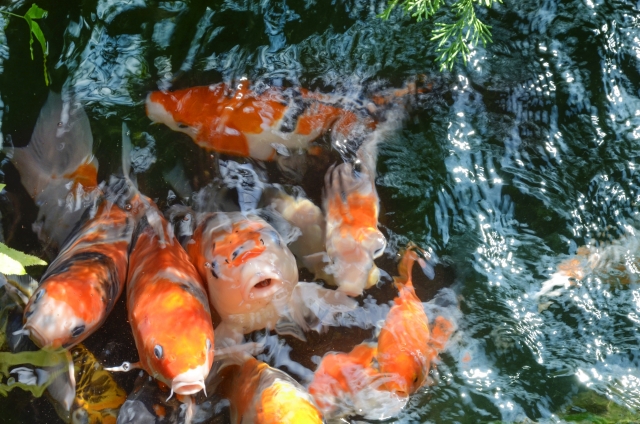Revisited Hirado, Nagasaki that we went in summer. Since it was inadequate to grasp the history of Hidden Christian Heritage just visiting there once. This time we paid a visit to Tabira Catholic Church first. It’s a pity that this premises was not selected as a component of Unesco World Heritage site, yet we were able to witness the dignified architecture and capture the torch of belief that is piously preserved over a century. Sheer blessing it was to be allowed to step into the church.
夏に訪れた長崎平戸を九月に再訪してきた。隠れキリシタンの歴史を辿り、その歴史の大きな流れを理解するには、たった一度の訪問だけでは到底不十分だったからだ。今回は、まず田平天主堂を訪れた。田平天主堂はユネスコ世界遺産の関連遺産には惜しくも漏れたけれど、一世紀を超えて風雪に堪えたその佇まいと、今でも大切に守られている信仰の灯火を、天主堂内を観覧させて頂いて体感することが出来たのは、私自身にとって大きな恵みだった。
*「隠れキリシタン」のことを「潜伏キリシタン」とも称するが、それは近年用いられる様になった学術用語であり、ここでは昔ながらの「隠れキリシタン」という呼称で書いている。

Christianity was introduced to Japan in 1549, by a missionary from Society of Jesus, Francisco de Xavier. The teaching was protected by Oda Nobunaga, but as time descended the Tokugawa Shogunate government prohibited Christianity sternly in extreme and churches were destroyed. Also, foreign missionaries were expelled from Japan. However, Hidden Christian conserved the belief over 2 centuries without missionaries.
日本にキリスト教が伝来したのは1549年。イエズス会宣教師フランシスコ・ザビエルにより伝道された。キリスト教を保護した織田信長の世から時代は流れ、江戸時代には幕府の禁教令により、すべての教会堂は破壊され、宣教師は国外追放となった。しかし隠れキリシタンは宣教師不在の中、二百有余年に渡り信仰の燈を消すことなく守り続けた。

They transformed Christianity while accepting Japanese ancient Shintoism and Buddhism and developed peculiar culture. The history was evaluated and led to be recognized as Unesco World Heritage site. I could comprehend the history, but still not certain why there remained many European style churches in Nagasaki area that was in severe poverty. Since it is hard to believe that there was much wealth to build great churches nor leaders who played as massive mental pillar.
そして日本古来の神道や仏教を受け入れながら、キリスト教を変容させ、特異な文化を築いて行ったことが、ユネスコ世界遺産の認定に大きく働いた。その歴史の流れはおおよそ掴めたのだけれど、しかし、貧しい寒村であった長崎地域に、何故、多くのヨーロッパ様式の教会群が長崎に残されているのかが、自分の頭の中で結びつかなかった。寒村には立派な天主堂を建てるような潤沢な資金あり、精神的支柱となる指導者がいたとは、到底思えなかったからだ。

To understand the background in depth, we planned out the second Hirado, Nagasaki Hidden Christian Heritage trip. Gradually I came to connect historical elements to one flow of history by reading pamphlets that I got in churches, listening to local storytellers in Kasuga village center, watching a movie, observing exhibitions, and reading booklets. Kasuga village is a small village that has been worshiping a mountain before Christianity and prayed for island where Christians were martyred.
そこをよく知りたくて、第二弾の平戸隠れキリシタン歴史探訪の旅に出掛けてきた訳だ。しかし、その疑問は教会堂で頂いた資料や、棚田が広がる春日集落の「かたりな」という語り部の方達が駐在する在所で資料を沢山頂いて、展示品を見て、ビデオを視聴することで徐々に溶けて行った。春日集落とは、キリスト教が伝わる以前から信仰された山や、キリシタンが殉教した島を拝むことによって信仰を実践した集落だ。

According to the storyteller, her father was gathering with local men once a year, and having a meeting forbidding women. When young, the lady didn’t know what they were doing nor allowed to look in. Later she got to know that it was a ritual of Hidden Christian. Some villagers who believed Christianity escaped to Gotoh island by boat not to be killed.
語り部の方のお話によると、お父さんが村の人たちと年に一度集まって、女人禁制で会合を開いていたそうだ。娘時代、その方はお父さん達が何をしているのか知らなかったし、その様子を見ることも禁じられていたそうだ。後々になって、それが隠れキリシタンの儀式だったということを知ったそうだ。村人でキリスト教を信ずる人は、殺されないように五島へ船で逃げて行っていたこともあったとのお話もされていた。

And Kasuga villagers were climbing mt. Maruo overlooking spectacular 360 degrees of terraced rice paddies and the ocean. They gathered on the top, eating and drinking and partying when something occurred. And this very mountain was the mental pillar of Hidden Christian. There was carved magnanimous yet extremely rigorous history that has been preserved for centuries long before Roman Catholic churches were built.
そして春日集落の人々は、丸尾山という360度の棚田が見渡せる絶景の山に登って、何か物事があると飲み食いしたり騒いだりしていたそうだ。そしてこの山こそが、隠れキリシタンの精神的支柱であった。そこにはローマ・カトリックの天主堂が建つ前より脈々と守り続けられてきた、大らかでしかし苛烈な時の流れが刻み込まれていた。

At the village center, I saw wooden cards that Hidden Christian confidentially treasured, and listened to the explanation. Mother Marry was described cryptographically, and a whip for oneself to experience the suffering of Jesus, and the whip was transformed the usage for purification ritual when expelling disease.
在所の「かたりな」では、隠れキリシタンが隠し持っていたというお札を見て、その説明も聞いた。袋の絵があり、それは、お袋様、つまりマリア様を指すものであったとのこと。また、キリストの受難を忍ぶため、自らを打つ鞭もあったが、それは病気などをお祓いするものへと転化して使われる様になって行ったとのことだった。

Nowadays, there are no Hidden Christian nor Christians in Kasuga village. However, the elderly storytellers looked proud and having sense of mission to tell the history. A cup of green tea that I was served was so hot and tasty.
しかし今やもう春日集落には隠れキリシタンはおらず、キリスト教の人もいないそうだ。それでもお年寄りの語り部の方達からは、この歴史を語り伝えて行こうとする、大きな誇りと使命感の様なものが感じられた。頂いた一杯の緑茶もとても美味しかった。
And the national seclusion policy of eliminating Christianity ceased, and opening a country in 1854, missionaries came in Nagasaki and constructed Ohura Catholic church. And in 1865, missionaries of Ohura church and Hidden Christian encountered: ‘the discovery of the believers’. Though, numerous Hidden Christian declared their belief, the government accelerated oppressions again. However, receiving intense protest form the West, Meiji Government lifted the ban in 1873. Since then, believers split to returning Catholic, maintaining Hidden Christianity, and conversing to Shintoism or Buddhism.
そして鎖国の時代キリシタン排斥の時代が終わりを告げ、1854年の開国の時が来て、長崎に来た外国人宣教師たちが大浦天主堂を建設した。そして1865年には、大浦天主堂の宣教師と潜伏キリシタンが出会った「信徒発見」があった。しかし多くの潜伏キリシタンが信仰を表明したため、再び政府の弾圧は強まることになる。その一方で西洋諸国の強い抗議を受け、明治政府は1873年キリスト教を解禁とした。そこからカトリックへ復帰する者、引き続き隠れキリシタン信仰を実践する者、神道や仏教へ改宗する者へと分かれて行った。

And in the area that returned to Catholic, European style churches were built with financial support of Roman Catholic and offerings from believers. Withstanding such historical transitions, there are many churches in Hirado, Nagasaki area. I came to understand finally. Linking dots and making a line, eventually I came to grasp the overview of the history.
そしてカトリックに復帰した集落では、ヨーロッパ様式の教会がローマ・カトリックからの財政支援と信者からの献金により建てられて行った。その様な歴史的変遷を経ているので、長崎平戸地区には多くの教会堂が立っているのだ、ということがようやくわかる様になった。やっと自分の頭の中で点と線を結びつけて、歴史を概観できるようになった訳だ。

I spent junior and senior high school days in Nagasaki, and there were lots of Catholics. And I came to know it was due to the long history. By actually having a visit to a certain place and see with own eyes and listen to the locals and think by myself, and organizing the content after coming back home and learn further, then I am making a worldwide intellectual map of my own. What a great pleasure of interpreting history vertically and horizontally.
中学高校時代を過ごした長崎では、カトリックの人が多くいたのだけれど、それもこの様な歴史的背景を持つ土地のなせる技だということが分かってきた。実際にその場所へ出掛けて行って、自分の目で見て土地の人の話を聞き、この頭で考え、帰宅後その内容を整理して学び直し、自分なりの世界大の知の地図を作ってゆくこと。そして歴史を縦と横を結びつけて理解することの愉しさよ。
And I’m pondering the meaning of writing history in descendent age from a personal point of view.
後世の者が、その人なりの視点から捉えた、歴史というものを書くということの意義についても考える。
Love and Peace…
参考資料
『世界文化遺産 長崎と天草地方の潜伏キリシタン関連遺産 日本独自の宗教的伝統 ダイジェスト版』 企画・発行/ 長崎県、熊本県、長崎市、佐世保市、平戸市、五島市、南島原市、小値賀町、新上五島町、天草市
『長崎と天草地方の潜伏キリシタン関連遺産②③ 平戸の聖地と集落(春日集落と安満岳・中江ノ島)ガイドマップ』企画・発行/ 長崎県、熊本県、長崎市、佐世保市、平戸市、五島市、南島原市、小値賀町、新上五島町、天草市






















